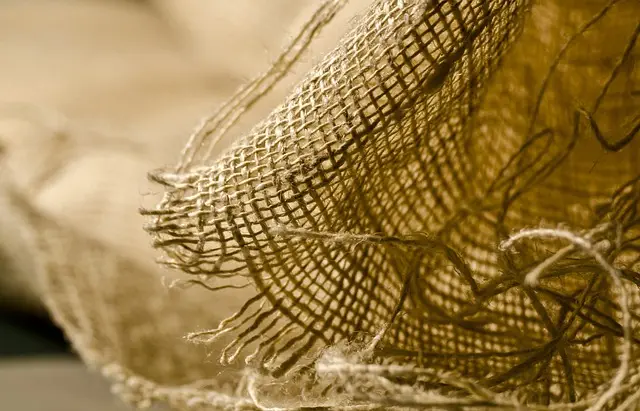Clove kratom, a strain of Mitragyna speciosa with a clove-like scent and taste, has been explored for its potential to alleviate muscle soreness, commonly known as DOMS, which occurs after intense physical activities. Its active alkaloids, such as mitragynine and 7-hydroxymitragynine, may interact with opioid receptors in the brain to reduce discomfort. Emerging research and user testimonials suggest clove kratom could be an effective remedy for muscle pain, providing natural pain relief while also offering anti-inflammatory effects. However, it's important to approach its use responsibly due to the risk of dependency and potential drug interactions. Users should adhere to recommended dosages, which can range from 2 to 8 grams depending on individual tolerance, and are advised to consult with healthcare professionals before using clove kratom for muscle soreness relief. Safety is paramount, and users must ensure they purchase high-quality, pure products from reputable sources, especially considering the legal status of kratom varies by location. Regular monitoring for side effects and avoiding long-term use are also recommended to minimize risks associated with tolerance and dependence.
Muscle soreness, a common experience post-exercise, can significantly hinder recovery and performance. Whether from an intense workout or physical labor, finding effective relief is crucial for maintaining an active lifestyle. Clove Kratom, a natural supplement derived from the Mitragyna speciosa tree, has garnered attention for its potential role in alleviating muscle soreness. This article delves into the scientific understanding of muscle soreness and explores how clove kratom, specifically, can offer relief. We will discuss the optimal dosage for clove kratom and safety considerations to ensure its beneficial effects are achieved without compromising well-being. Understanding the interplay between exercise, muscle recovery, and natural remedies like clove kratom is key to optimizing your health and fitness regimen.
- Understanding Muscle Soreness and Its Causes
- The Role of Clove Kratom in Muscle Soreness Relief
- Effective Dosage and Safety Considerations for Clove Kratom Use
Understanding Muscle Soreness and Its Causes

Muscle soreness, often referred to as delayed-onset muscle soreness (DOMS), can occur after intense physical activity, such as exercise or heavy lifting. The cause of DOMS is not fully understood but is believed to result from minor tears and inflammation within the skeletal muscles that arise from unaccustomed loading. This phenomenon is particularly common when introducing new exercises or significantly increasing the intensity or volume of a workout routine. The severity of muscle soreness can vary greatly among individuals, depending on factors like fitness level, age, and nutritional status.
Certain strains of kratom, such as clover kratom, are often explored for their potential to alleviate muscle pain. Kratom contains various alkaloids, with mitragynine and 7-hydroxymitragynine being the most abundant. These compounds are thought to interact with the opioid receptors in the brain, which may help reduce pain perception. While scientific research on kratom’s efficacy for muscle soreness is still emerging, anecdotal evidence and user experiences suggest that clover kratom, in particular, can provide relief from muscle discomfort. It’s important to note that while some users report positive outcomes, the use of kratom should be approached with caution due to its potential for dependency and interactions with other substances. Users interested in exploring kratom for muscle soreness relief should do so responsibly and consider consulting a healthcare professional before integration into their recovery regimen.
The Role of Clove Kratom in Muscle Soreness Relief

Clove Kratom, a strain derived from the Mitragyna speciosa tree, has garnered attention for its potential role in alleviating muscle soreness. This particular strain is named for its resemblance to clove aroma and flavor, which is a distinct characteristic among kratom varieties. The active alkaloids present in Clove Kratom, such as mitragynine and 7-hydroxymitragynine, are believed to interact with the body’s opioid receptors, providing pain relief that can be particularly beneficial for those experiencing muscle soreness from intense physical activity or chronic pain conditions. Users report that Clove Kratom helps in managing discomfort levels, allowing for a more comfortable recovery period. Its effects are often described as promoting relaxation without causing sedation, making it a favored option for individuals seeking pain relief during active days. Additionally, the anti-inflammatory properties attributed to Clove Kratom may contribute to its muscle soreness relief capabilities, further enhancing its appeal for those looking for natural alternatives to manage pain. As with any supplement, it is crucial to use Clove Kratom responsibly and in accordance with appropriate dosing guidelines to avoid adverse effects and ensure safety.
Effective Dosage and Safety Considerations for Clove Kratom Use

When exploring the effects of clove kratom for muscle soreness relief, understanding the effective dosage is paramount for achieving the desired therapeutic outcomes while minimizing potential risks. Clove kratom, a strain derived from the Mitragyna speciosa tree, is known for its unique alkaloid profile that may contribute to pain management and muscle relaxation. Typical dosages for clove kratom can vary based on individual tolerance, body composition, and the specific condition being addressed. A standard starting dose for most users is between 2 to 4 grams, with some individuals finding relief at higher doses up to 8 grams. However, it’s crucial to approach any supplementation with caution; starting with a lower dose and gradually increasing as needed is advisable.
Safety considerations are non-negotiable when incorporating clove kratom into one’s wellness regimen. The substance is not without potential side effects, and its interaction with other medications should be carefully managed. Long-term use may necessitate a dose adjustment to maintain effectiveness. Moreover, individuals with pre-existing health conditions or those taking pharmaceuticals should consult with a healthcare provider before using clove kratom. Adhering to recommended dosages is essential, and it’s wise to limit usage to short durations to avoid the development of tolerance or dependence. Additionally, purchasing from reputable sources is crucial to ensure the quality and purity of the product. Always prioritize safety by staying informed about the legal status of kratom in your jurisdiction and adhering to local regulations.
Muscle soreness, whether from intense exercise or physical labor, can be a persistent challenge for many individuals. Understanding its origins and potential remedies is crucial for effective management. Among the natural options available, clove Kratom has garnered attention for its potential role in alleviating muscle discomfort. As outlined in this article, clove Kratom’s efficacy stems from its unique alkaloid profile, which interacts with the body’s pain receptors. When used judiciously and within recommended dosages, clove Kratom can offer significant relief without the need for pharmaceuticals. However, it is imperative to approach its use with caution, adhering strictly to safety guidelines to avoid adverse effects. In conclusion, for those seeking a natural path to muscle soreness relief, clove Kratom may be a viable alternative, but always prioritize informed decision-making and consult with healthcare professionals where necessary.






